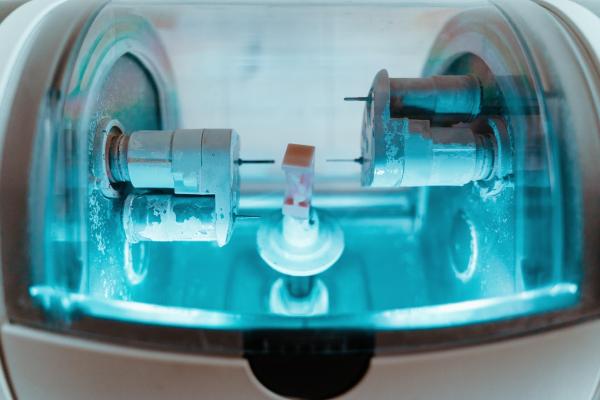How Laser Tech Can Make Your Manufacturing Business Sustainable
Sustainability has emerged as one of the most significant concerns for manufacturers in recent times. Buyers want to go green, with 85% of them already moving toward sustainable brands. Governments incentivize businesses to embrace the mindset. Moreover, sustainability enhances efficiency, saves money, and boosts the reputation of a business.
The manufacturing industry needs to be at the forefront of the green approach. Statistics show that 76.6% of U.S. emissions are driven by production. While the number sounds overwhelming, going sustainable is easier than you imagine.
You can adopt green practices with waste optimization, energy savings, and recycling. Technologies like laser processing are game changers when it comes to manufacturing sustainability.
Industrial lasers can modernize several production processes, including cutting, welding, resurfacing, machining, and more. Beyond increasing precision, performance, and efficiency, lasers can drive sustainable practices for manufacturers.
Let us explain how laser production can make your business green and clean.
Compact Manufacturing
Manufacturers must look for ways to reduce their industrial footprint. A smaller footprint can lower their environmental impact. Laser technology makes it possible because it is compact enough to reduce operational space and equipment requirements.
For example, a single laser welding machine can replace dozens of ultrasonic wire bonding machines. Adopting laser processing can reduce floor space requirements and energy usage.
According to Novanta Photonics, laser manufacturing solutions can help industries with different operations. These include material processing, digital converting, precision processing, and marking and coding.
Manufacturers can explore endless possibilities to reduce their operational footprint with these solutions. These solutions can also lower the footprint for diverse industries such as aerospace, automotive, medical device production, consumer goods, and more.
Energy Efficiency
Energy consumption is perhaps the biggest hindrance for manufacturers looking to go green. According to surveys, the manufacturing sector represents nearly 98% of industrial consumption. Conventional manufacturing uses energy sources such as coal, gas, and oil, which are far from eco-friendly. They deplete natural resources and damage the environment.
Laser tools and machines can address the issue by driving energy efficiency for industrial units. They use only a fraction of energy and have smaller cooling requirements than traditional systems. Switching to innovation can make your business far more energy-efficient. Not to mention, you can save big on energy bills in the long run.
No Chemicals
Going green is also about eliminating industrial chemicals from your production process. Many manufacturers still use chemicals for decontaminating surfaces. These chemicals and the rinse water have to be treated and disposed of effectively to prevent environmental damage. Techniques such as laser resurfacing can reduce the use of chemicals for surface cleaning and stripping of materials.
Industrial lasers are a better alternative. They can remove coatings, oxides, rust, and other surface contaminants without the use of toxic chemicals. For example, Boeing adopted laser ablation as an alternative to chemical stripping to remove paint from airplanes. The initiative decreased hazardous waste by a whopping 90%.
Negligible Material Wastage
Did you know that manufacturing wastes 10% of the Global Warming Potential (GWP) every year? The numbers indicate that the industry needs to work to reduce waste and greenhouse gas emissions sooner than later. Consumables make a significant amount of waste during manufacturing operations.
The laser processing technology is an ideal solution as it produces zero waste and does not rely on industrial consumables. For instance, laser marking is an excellent swap for processes using consumables like printing ink and labels. You can also use laser micromachining to maximize precision and lower production errors.
Long Operating Life
Equipment replacement is another source of industrial waste. Every time you buy a new machine, you contribute to wastage because extra resources go into producing new equipment. Machines with longer operating life are inherently sustainable as they cut unnecessary waste.
Laser systems have an impressive lifespan. You can expect them to run for thousands of hours, which is far more than traditional industrial equipment. The best part is that they give consistent, high-quality results over the years without a lot of maintenance and wear. You can save tons of money on maintenance and replacement in the long run.
What Next!
Manufacturers are moving toward green operations because they understand the value of sustainability. But going green is a big commitment, considering it requires a complete revamp of industrial operations. Laser technology can give you a head start with the transition as it drives sustainability in several ways. The good thing is that the innovation is easily accessible. All you need to do is find a reliable provider to help you join the green bandwagon.

